Landscape Strategies: The Gandhi Park in the Face of the COVID-19 Pandemic
As a result of the health emergency that the COVID-19 has brought to our lives, urban public spaces where a significant number of people used to congregate, have been reinterpreted as unsafe places where it is difficult to maintain the necessary measures to prevent contagion.
However, they also seem to be the first option to go out and face this “new normality”, so it is important to implement proposals that help us maintain these safety measures in an environment where we feel safe and calm.
For this reason, we believe that Gandhi Park is a good option to carry out proposals that allow us to return to urban public spaces safely and peacefully. Located in the first section of the Chapultepec forest, the Gandhi Park is a space surrounded by a residential and office area that is particularly relevant due to its proximity to Reforma Avenue (one of the most important economic corridors in Mexico City).
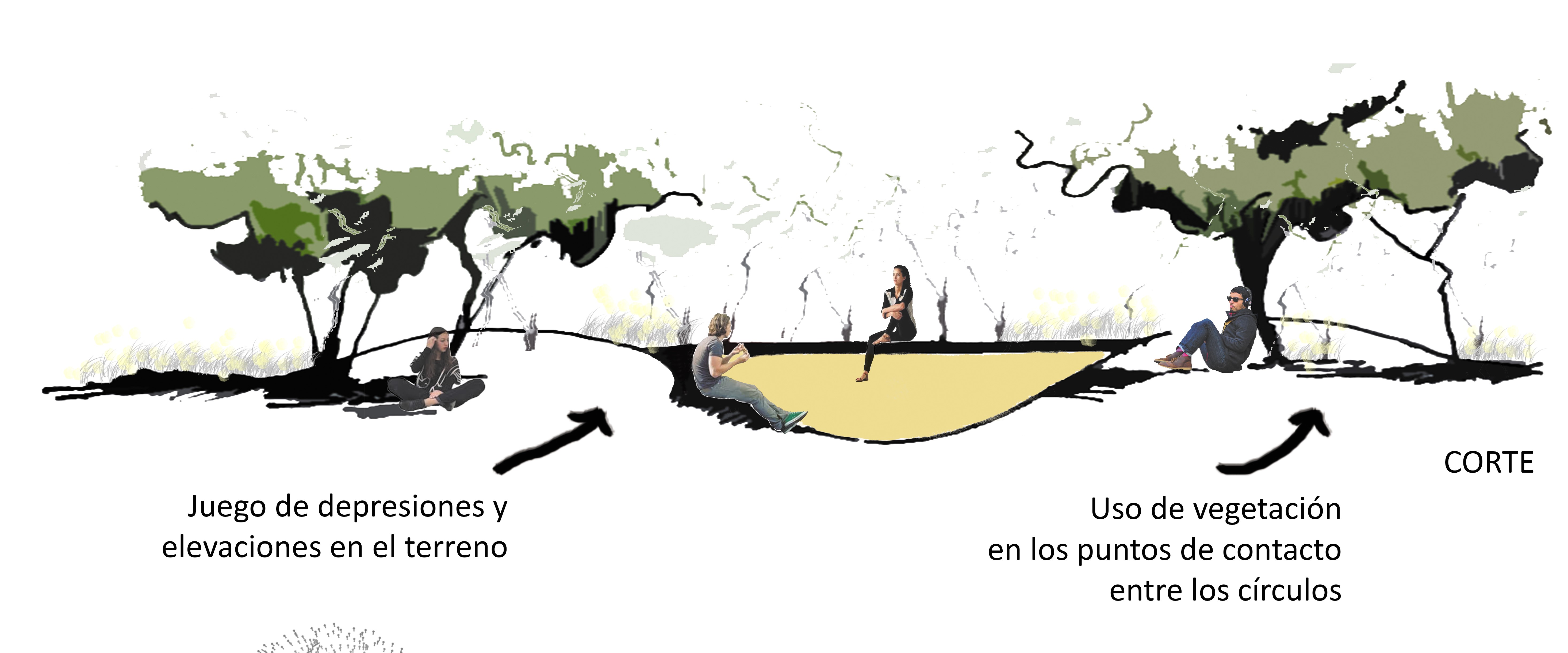
Section of resting area
Illustration: Karla Colin
Taking this into account, we consider it important to carry out a small intervention in this public space due to its great potential to attract multiple users. At the same time, we hope that the sanitary and distancing measures proposed in this project will serve as an example for other spaces in Mexico City.
Due to the current global emergency arising from COVID-19, our lives have been disrupted by a 360° turn in many aspects of our lives as it used to be. The main measures to avoid COVID-19 infection in public spaces are social distancing, frequent hand washing, avoiding face touching and, the use of face masks.
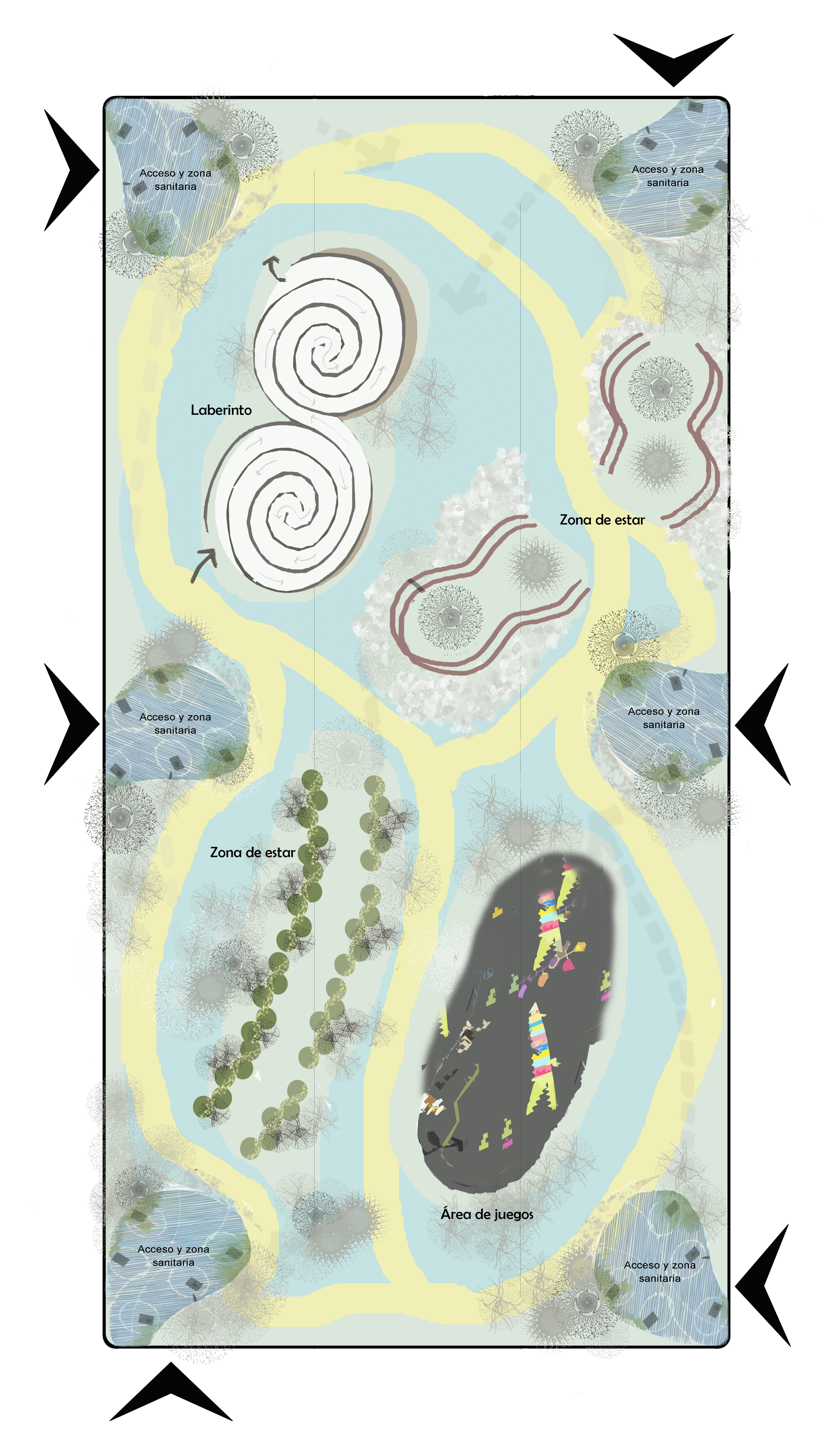
Master plan
Illustration: Karla Colin
In order to carry out these measures within a public space, we propose the implementation of materials, activities, signage and, a distribution that help this space to function properly, attending to the needs that this new normality presents us with.
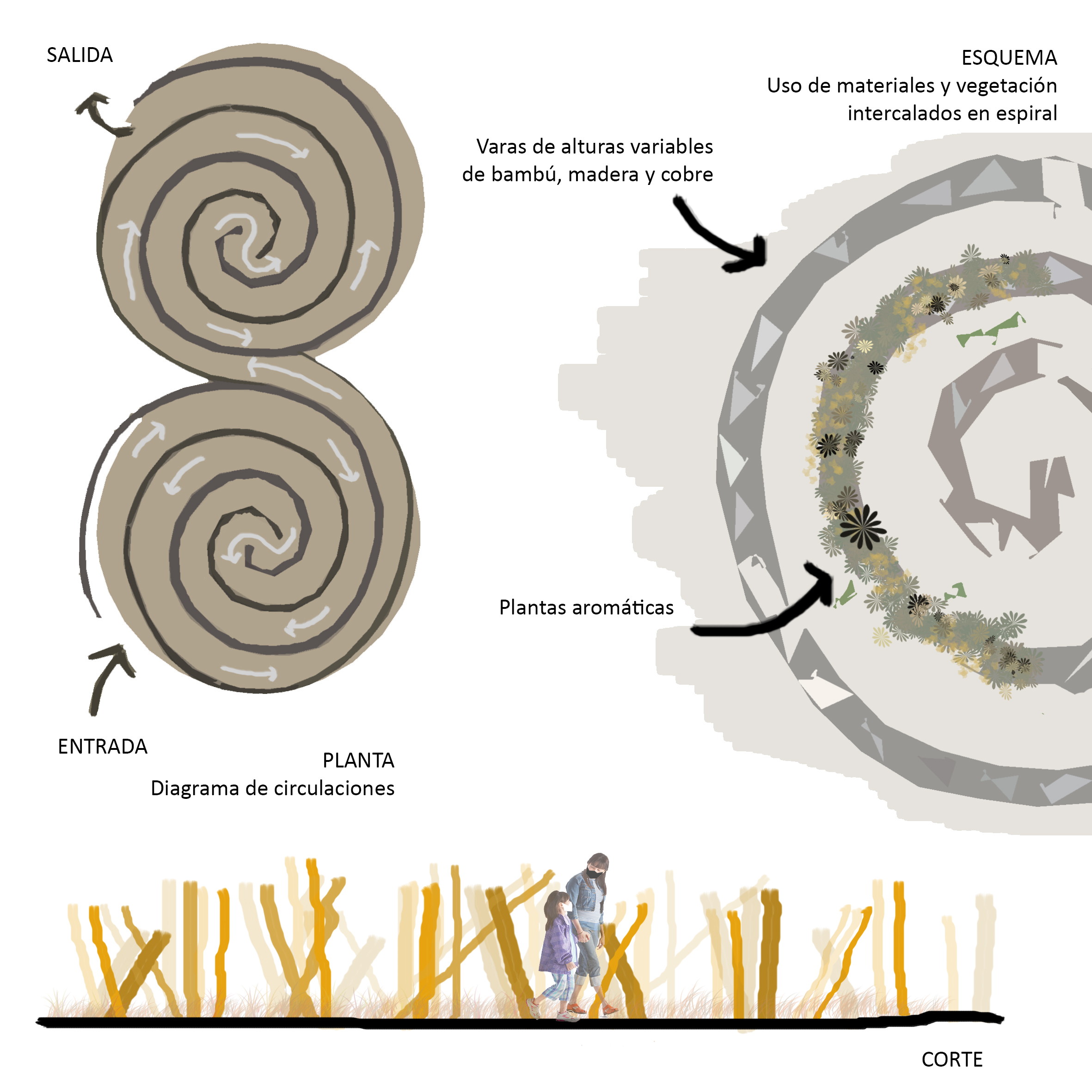
Labyrinth circulations diagram
Illustration: Karla Colin
Activities: A children’s area, which through a paved design, proposes a playground that allows the least possible contact with surfaces and other kids, without the need to be completely isolated.
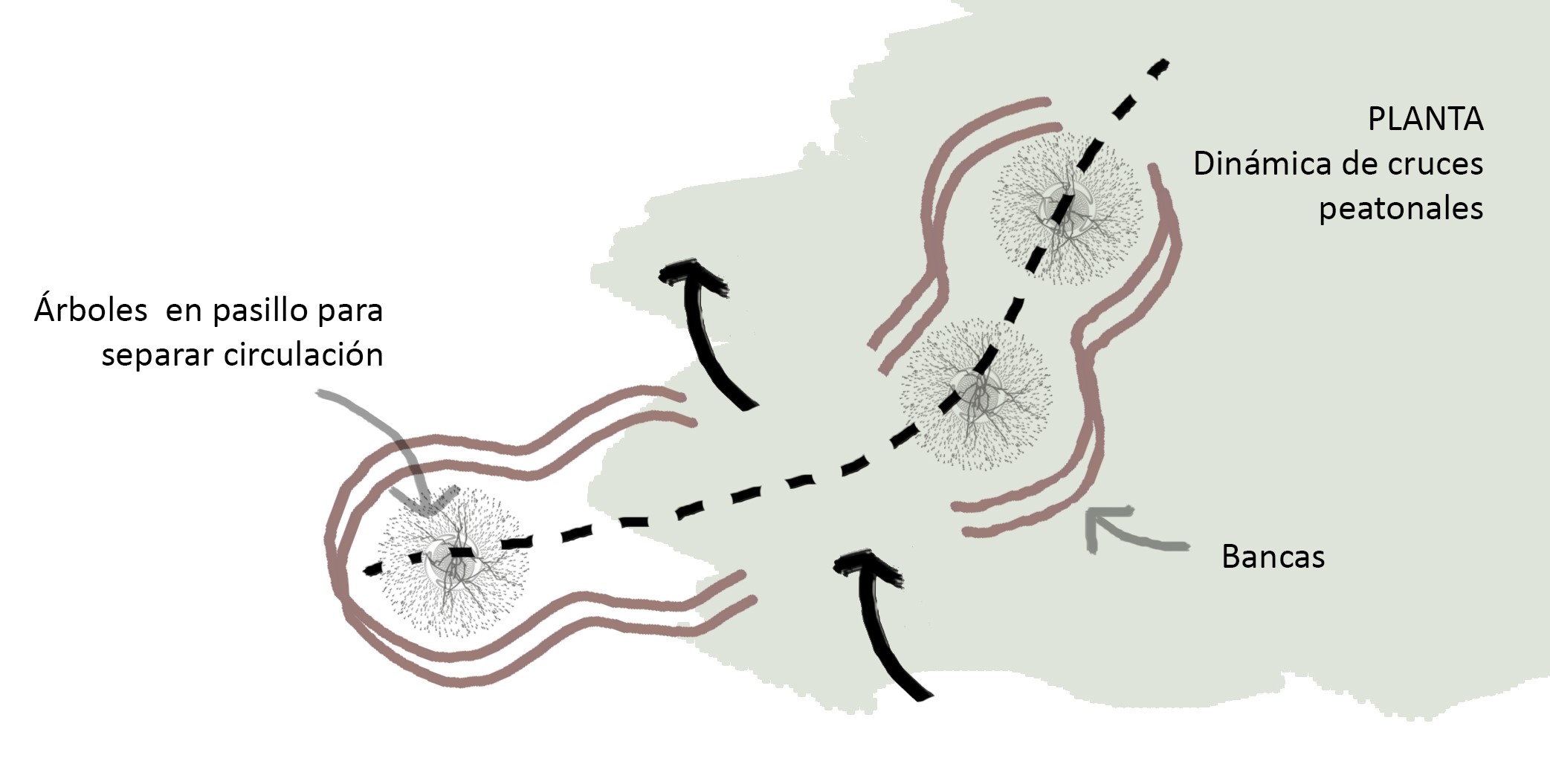
Dynamic plan of pedestrian crossings
Illustration: Karla Colin
An educational labyrinth, where aromatic herb species can be found with a descriptive card and some information panels on the site’s fauna and flora. Lounge areas for various passive activities, as well as walkers and a one-way bicycle path.
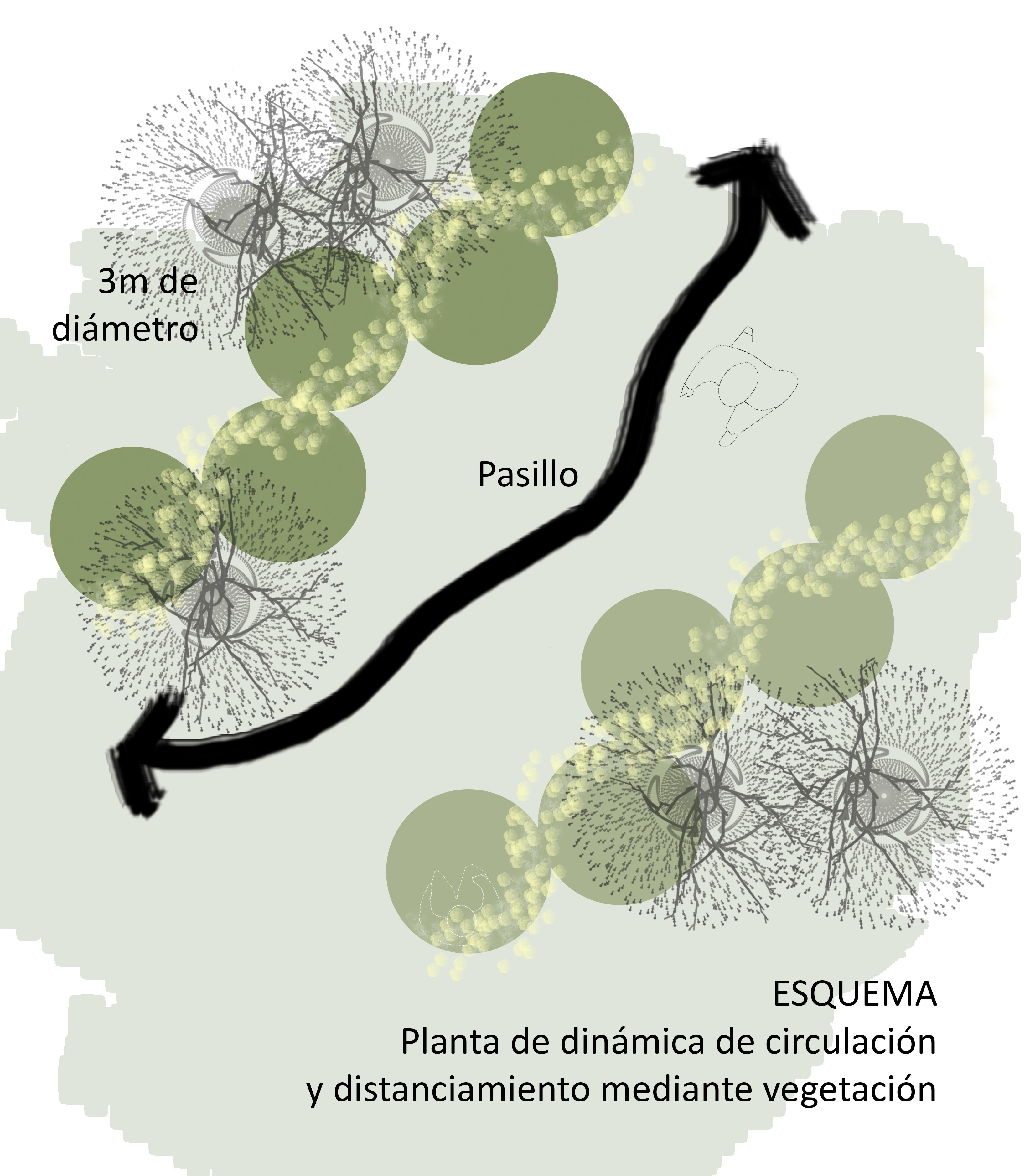
Illustration: Karla Colin
Signage: Mainly on the pavement, signs are proposed by means of colors or lines that indicate the direction of traffic, the safe distance between one person and another, and change from one zone to another according to the zoning scheme.
Luminescent pavement is proposed at night to indicate the direction of movement and distances to be maintained between people, lines with a distance of two meters from each other, and circles of 1 m in diameter distributed every meter and a half between them.
Distribution: Hand washing and shoe cleaning areas are proposed in each of the 6 controlled accesses, unidirectional circulation, rest areas with an unevenness that allow to take better advantage of the adequate separation distances, a labyrinth area that works as a connection between one point and another of the park, an isolated cycle path by means of flowerpots to avoid conflicts with pedestrian circulation and a children’s playing areas.
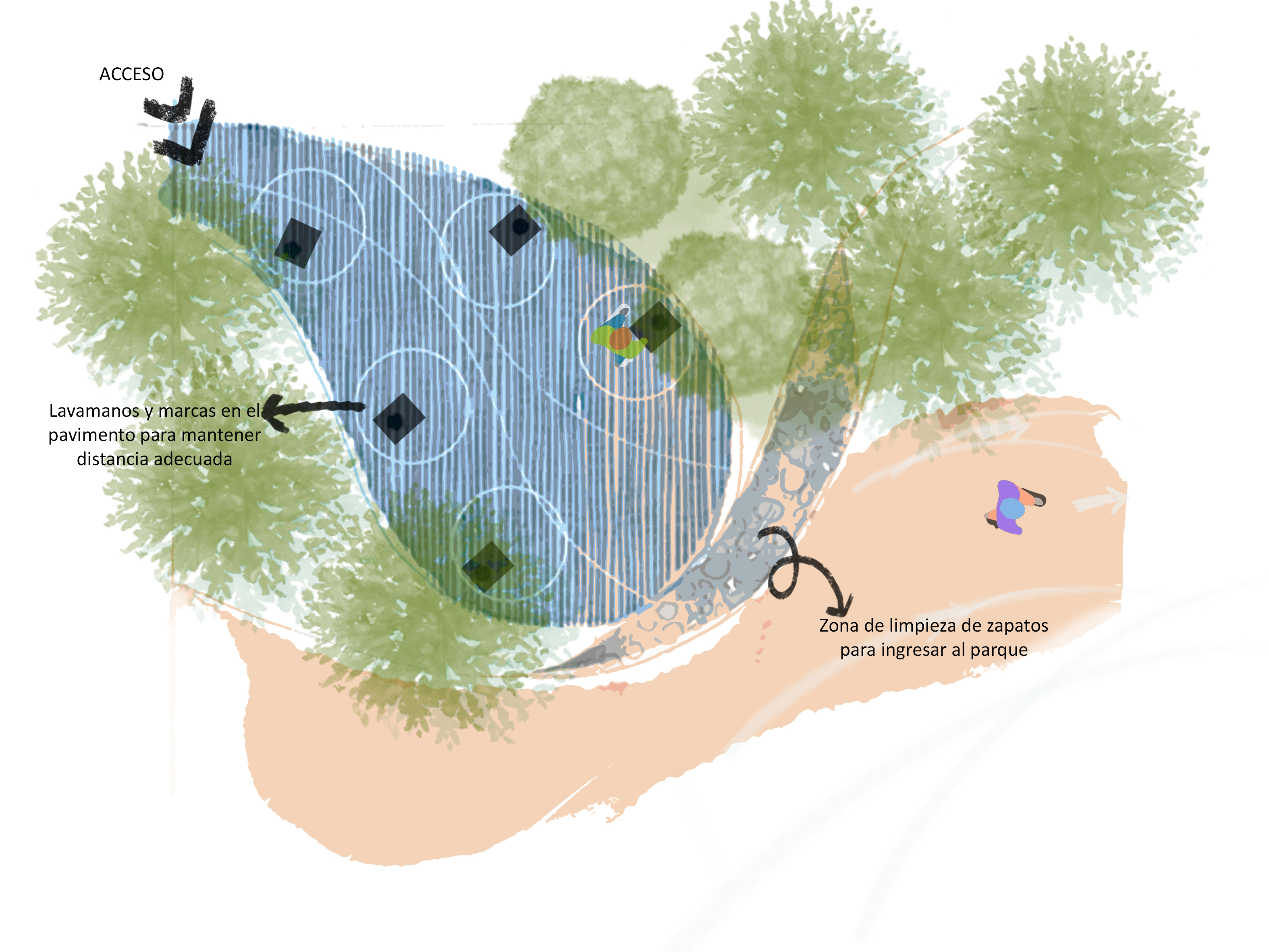
Plan of the hand washing area in the entrances
Illustration: Sofía Celaya
We believe that the relevance of a project in an emergency situation should revolve around the use of resources and materials, so we propose to help the visitor to easily identify the appropriate distances and avoid the crowding of many people in one area of the park without losing activity diversification.
Thus helping to reduce the visitor’s anxiety during their stay in this space and giving them peace of mind to interact with nature and other people without the need for direct contact.
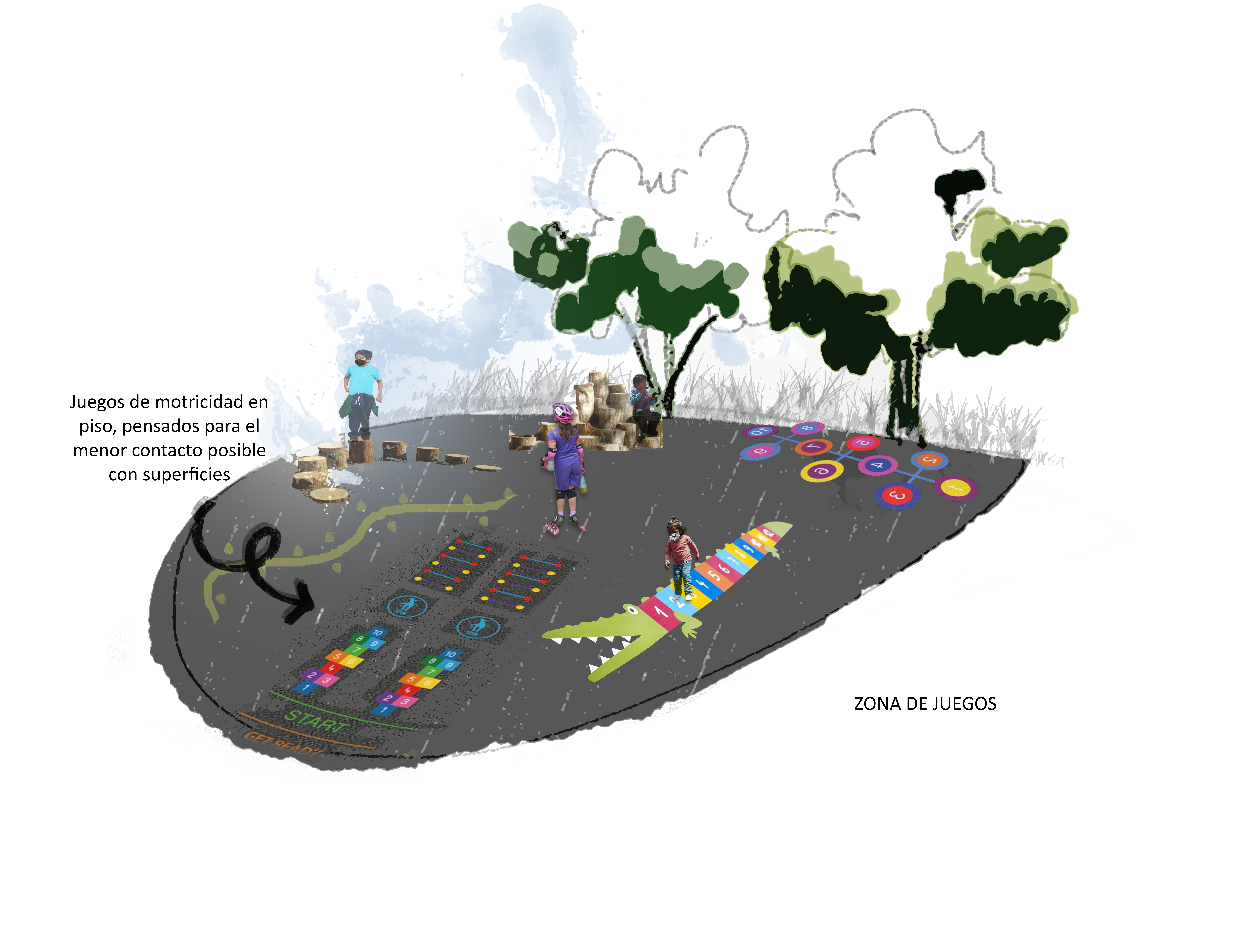
Area dedicated to children under 12 years of age with games for motor skills indicated on pavement of different colors to avoid contact with surfaces and a remote coexistence without physical barriers.
Illustration: Sofía Celaya








